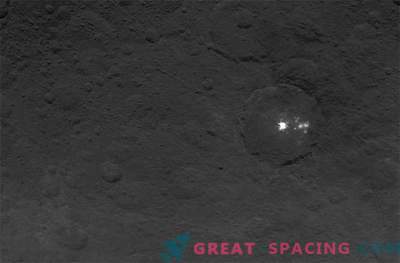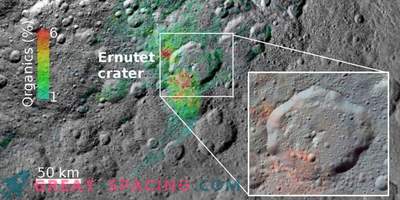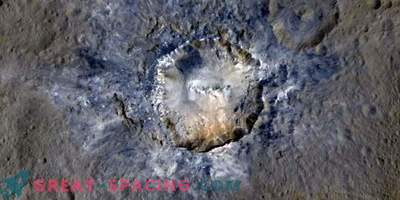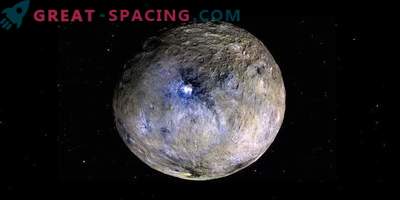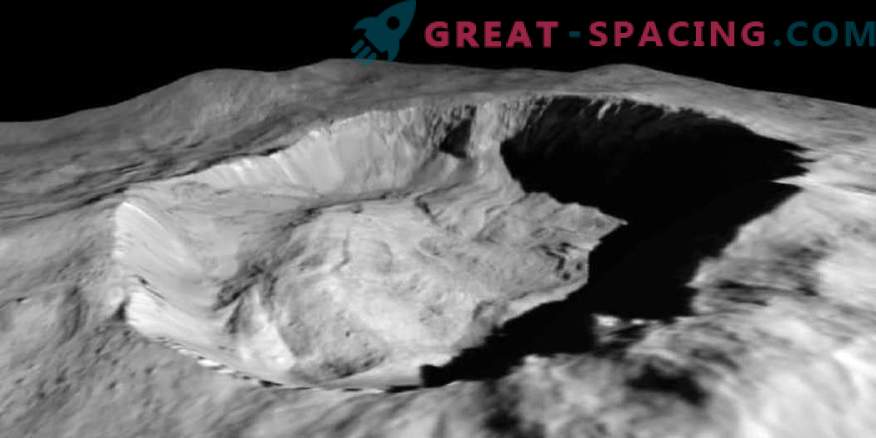
This is a review of the NASA Dawn mission, where it showed ice in the north wall of Ceres Crater, which is in constant shadow
The latest review of Ceres showed changes in the surface. It turns out that the only dwarf planet in the inner solar system is a dynamic body that continues to evolve and change.
The NASA Dawn mission has identified deposits that provide new data on materials in the crust and on the process of change. Observations from the VIR spectrometer previously found water ice on a dozen sites of Ceres. A new study showed an abundance of ice on the northern wall of the 20-kilometer crater Yulin. New surveys show an increase in ice volume.
The fact is that the approach of Ceres to the Sun along the orbital path together with seasonal changes creates a release of water vapor from the subsurface layer. Later it condenses on the wall of a cool crater, which increases the amount of ice. In turn, warming can cause landslides, exposing new ice spots.

The view of the Dawn mission shows the bottom of the crater of Ceres. It can be seen that the flow of ice and rocky rocks resembles terrestrial polar regions
Joint chemical, geological, and geographical observations made it possible to examine the dwarf planet in detail. Early data showed that the crust reaches a thickness of 40 km and is endowed with an abundance of water, salt, and possibly organic matter. The second observation, VIR, also revealed new data on cortical variability and suggests that the last change was recent. Dawn had previously found carbonates formed in the oceans. For example, sodium carbonate dominates over bright areas in the Occator crater. Later we managed to find 12 sites with an abundance of sodium carbonate. The study shows for the first time that hydrated carbonate was found on the surface of Ceres or any other planetary body other than Earth.
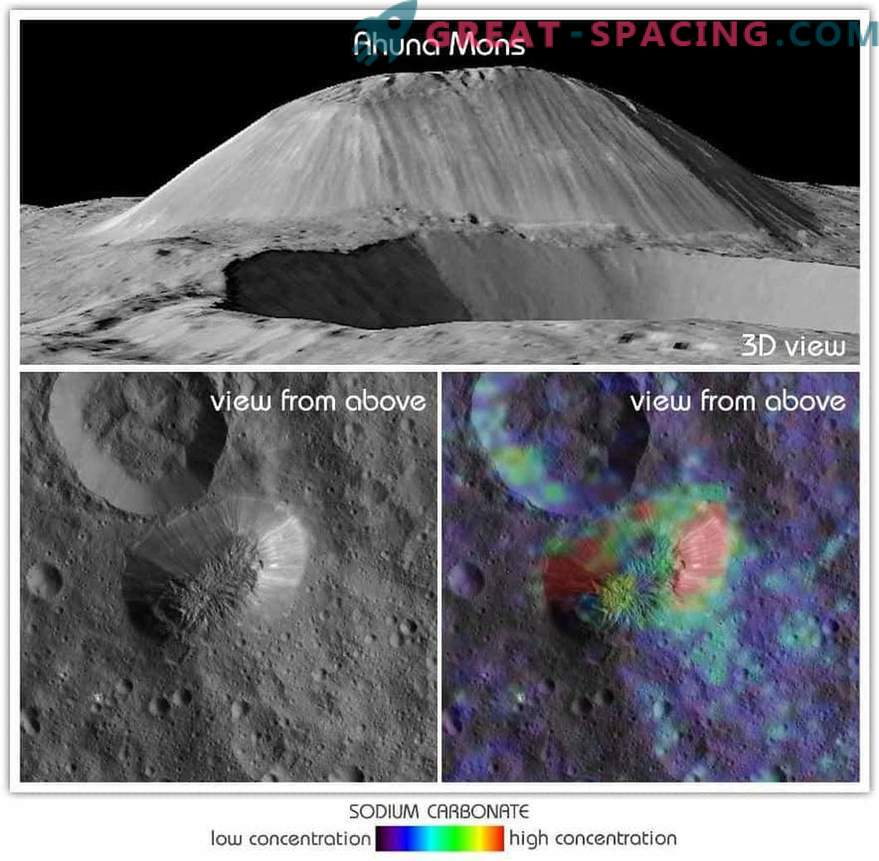
NASA's Dawn Mission Review shows Cerea Ahoun’s highest mountain (4 km high and 17 km wide). This is one of the few sites in Ceres, where they found a significant amount of sodium carbonate
Usually, water ice does not linger long on the surface if the area is not hidden in the shade. Similarly, hydrated carbonate is dehydrated, but it takes much longer (several million years).
A large variety of material, ice and carbonates exposed to shocks, landslides and cryovolcanism, suggests that the bark of Ceres is uneven in composition. These irregularities were created during the period of freezing of the original ocean of Ceres, which formed the crust, or later because of large blows or cryovolcanic activity.
All this indicates that Ceres is a geologically and chemically active celestial body.



